Homegrown: The JS Special, a Can-Am racer for the road
Welcome to Homegrown—a new limited series about homebuilt cars and the ingenuity, diligence, and craftsmanship of their visionary creators. Know of a killer Homegrown car that fits the bill? Send us an email at tips@hagerty.com with the subject line HOMEGROWN: in all caps. Love the JS Special? Read about more Homegrown creations here. -Eric Weiner
Jerry Shuck spent over three decades designing and building his stunning sports roadster. Among this candy blue delectable’s many virtues—gorgeous design, thoughtful engineering, fastidious attention to detail—the most compelling is that it is a product of patience. Decades of it.
The seed of this stunning Homegrown machine, the JS Special, started germinating in 1989. After pondering several kit car options dating back to his high school days, Shuck, of Mendocino, California, began building his dream machine. Thirty years of inspiration, perspiration, and state-of-the-art craftsmanship yielded a sub-2000-pound, 300-horsepower, Can-Am-worthy weapon.
“My father warned me not to get too fanatical,” Shuck notes, “but I ignored that advice.”
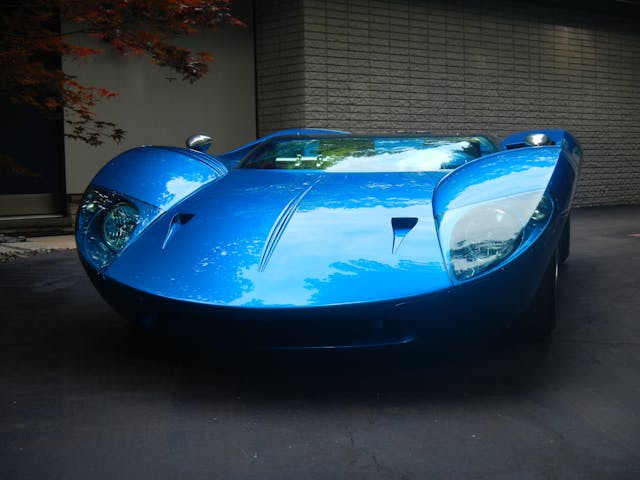
Shuck, 66, became an automotive da Vinci by studying sculpture at the California Institute of Arts. That education paved the way to employment as an aerospace and architectural modeler at Pacific Miniatures, Dimensional Presentations, and the Ralph M. Parsons Corporation. During spare moments while on assignment in Saudi Arabia, Shuck crafted 1/10-scale models of his dream car, first in wood, then fiberglass. “Luckily I had an abundance of time available at this stage, so I was able to devote full attention to the early models,” Shuck explains.
Upon his return to the U.S., Shuck became a clay modeler at GM’s Advanced Concepts Center (ACC) in Newbury Park, California. The expansion of his skill set would prove fortuitous. After helping shape the 1992 Corvette Sting Ray III concept and GM’s EV1 electric car, he hauled home the Chevant clay from those projects as raw material for the full-scale model he was sculpting in his garage.
Before ACC closed in 1996, Shuck learned digital sculpting via Alias software, another skill that came in handy for his off-hours project. Weekend, holiday, and vacation hours over seven years were spent shaping and perfecting clay. Shortly before GM moved Shuck and his wife back to Warren, Michigan, to continue work at the Tech Center’s advanced design studios, he and two friends laid up the primary body molds from the model.
The JS Special then went on hiatus for several years while Shuck created suitable garage space at his Michigan residence. In those days, he pondered the car “on a daily basis and created many worthwhile sketches.” To polish his fabrication skills in the meantime, he took TIG welding classes at a nearby community college to prepare for the space frame construction phase.
Before race car designers adopted monocoque aluminum construction, the accepted standard was an elaborate array of welded steel tubing that combined strength and stiffness with minimal weight. Drawing inspiration from the Maserati Type 61 “Birdcage” and Lamborghini’s LP400 Countach, Shuck created his space frame out of triangulated thin-wall 1.25-inch-diameter chrome-moly steel tubing. Using modern computer aided design (CAD) technology facilitated the process. ERA Replica Automobiles of New Britain, Connecticut, helped by supplying the suspension math model for the outfit’s (now discontinued) Ford GT40 replica. To suit his needs, Shuck added one inch to ERA’s 95.5-inch wheelbase and 57.0-/58.0-inch front/rear track dimensions.
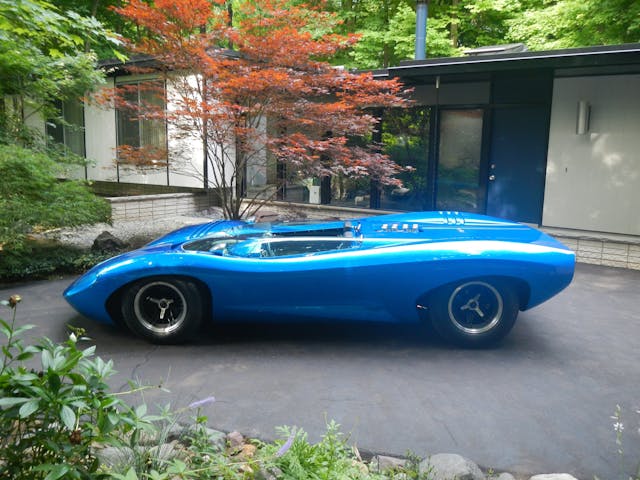
Shuck purchased unequal-length control arms, aluminum uprights, and front anti-roll bar suspension components from ERA. “Unfortunately [ERA was] difficult to work with and their prices are outrageous. Luckily, Bob Putnam, ERA’s chief engineer, did supply a floppy disc revealing suspension attachment points,” says Shuck.
The rack-and-pinion steering gear is from an MGB, with minor mods to suit this installation. Coilovers were engineered by Performance Shock of Sonoma, California. Brake calipers from a C4 Corvette grab Wilwood rotors. The aluminum 15-inch wheels cast by Phil Schmidt are accurate replicas of the circa-1965 Lola T-70 sports racer’s center-lock design. Roger Kraus Racing’s vintage Dunlop tires with appropriate tread patterns mount to the 8-inch-wide front and 10-inch rear wheels.
The JS Special’s engine began life as a 1963 Oldsmobile 215-cubic-inch V-8, selected because of its compact dimensions and aluminum block and head construction. Increasing displacement to 262 cubic inches, bolting on Buick 300 heads, and installing a quartet of Weber two-barrel carburetors yielded an estimated 300 horsepower. Phil Baker in Washington state built the engine while John Harcourt in New Zealand supplied the induction system. In Shuck’s estimation, “These experts were instrumental in my achieving a great powerplant for my car.”
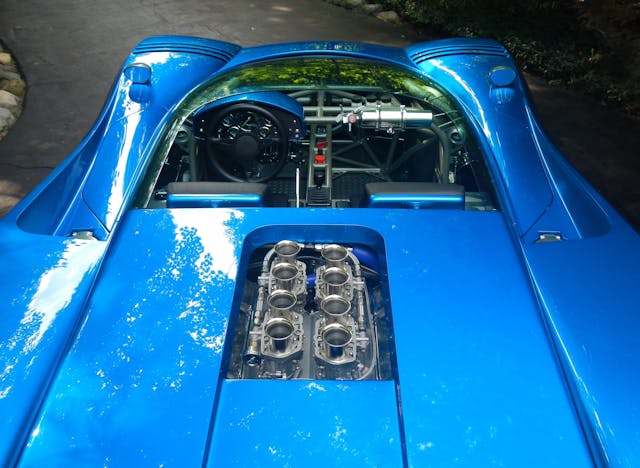
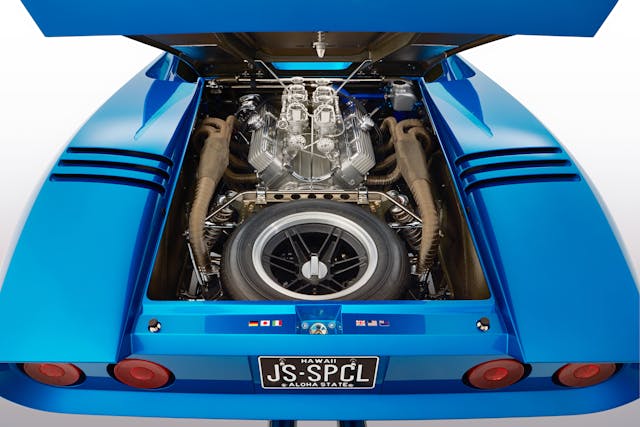
Kennedy Engineered Products devised an adapter to bolt the JS Special’s V-8 to a Porsche 914 transaxle, reconfigured by Transaxle Engineering with 901 gearsets.
Shuck fabricated one five-gallon sheet-aluminum fuel tank to reside in each side sill. He also built the exhaust system using bends and “baloney” tubing purchased from Stainless Specialties. Pipe wraps and insulation materials came from Design Engineering. Engine cooling is provided by a custom Griffin aluminum radiator.
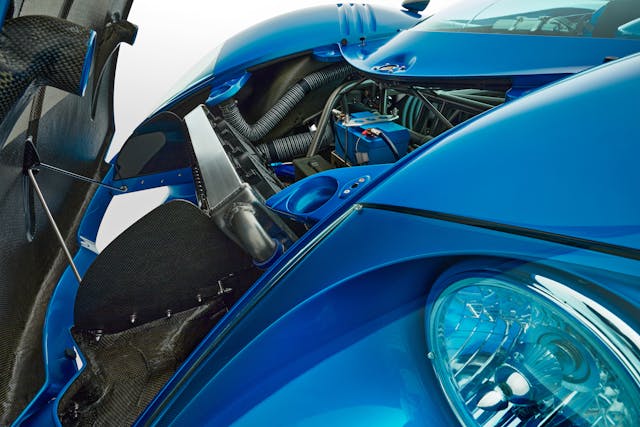
While constructing the chassis took only a couple of years, molding body panels consumed nearly a dozen. First a rotisserie was built to facilitate dividing the body shell into 19 primary molds. A couple dozen other molds were created to make the instrument binnacle, wheel tubs, inner body panels, and bucket seats. Then each panel was laid up using eight layers of carbon-fiber cloth and Nomex honeycomb bonded with epoxy resin. Every part was vacuum-bagged and oven-cured. “A mold for every panel was necessary because of my hope to enter mass production,” explains Shuck. “They’re still consuming space in my garage awaiting their ultimate owner.”
While inspiration for the bucket seats’ design came from the Lotus Europa S2, backrest and thigh-support angles and widths were adjusted to suit this application. Shuck built a wood pattern to mold the carbon fiber and Kevlar seat forms. Foam pads of different durometers (stiffnesses) were carved to provide suitable thigh and lumbar support.
Painting the JS Special was another serious ordeal. Fortunately, Shuck’s wife Kimiko is an automotive paint chemist. Her network yielded John Zerucha at PPG in Cleveland who spent months formulating the perfect shade of candy blue before donating materials to the project. Motor City Solutions in Taylor, Michigan, spent a year applying five base coats, eleven candy mid coats, and five clear coats of paint. The result is magnificent, but it’s one of the few elements of the JS Special that did not come out to Shuck’s maximum liking. “This stage of the project was a nightmare I’d like to forget,” he recalls. “While everyone loves the color, the finish on my car is annoyingly fragile.”
After 27 years as a clay and digital sculptor, Shuck retired from GM in 2016 to focus on completing his homebuilt. With the project’s ledger showing a total investment of $85,000, full running, driving status was finally reached in 2019. Shuck’s crowning achievement was obtaining registration documents and license plates in Michigan’s “specially constructed vehicle” category. Hagerty provided appropriate insurance coverage.
Three years ago, Shuck and his wife relocated to California, where Michigan’s registration documentation was irrelevant and not recognized by state authorities. He’s currently struggling to convince the California Air Resources Board and other state agencies that his car merits their approval. In the meantime, driving opportunities are limited. The JS Special’s odometer has yet to top two digits. “There’s gas in the tank awaiting my chance to clock lots of miles,” Shuck laments.
With a little luck, Shuck and his wife may yet clear this final tall hurdle. They’ve certainly been patient.
Check out the Hagerty Media homepage so you don’t miss a single story, or better yet, bookmark it.
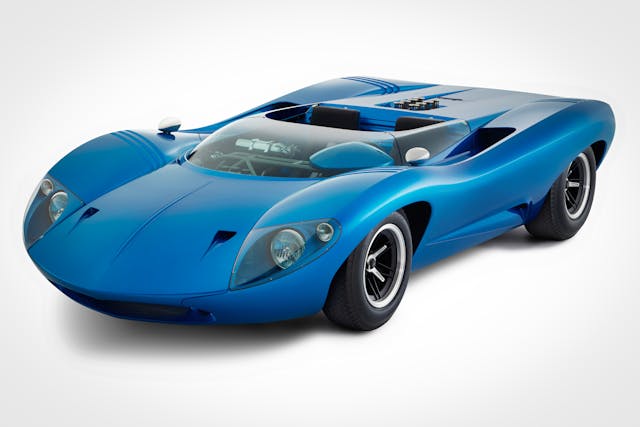
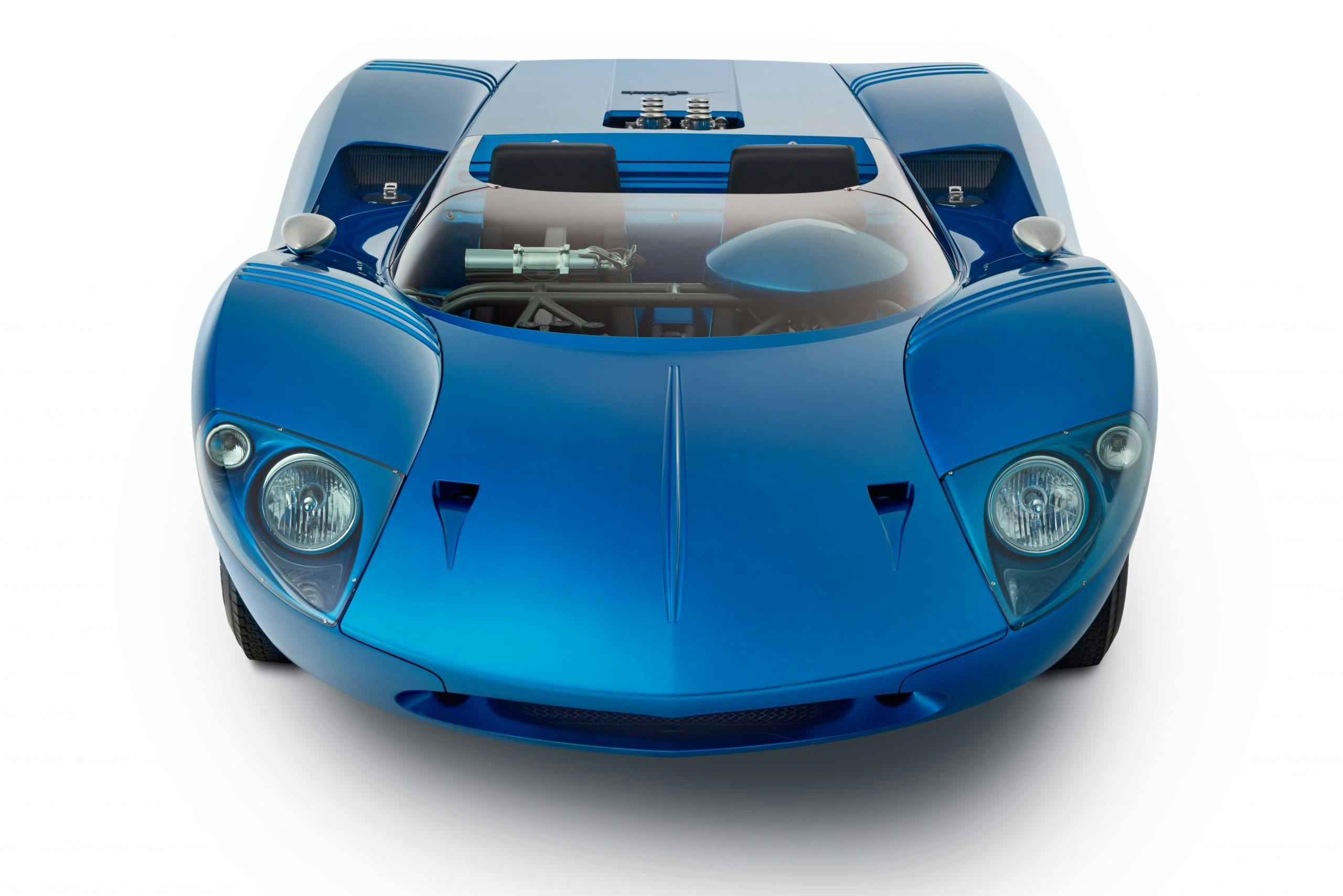
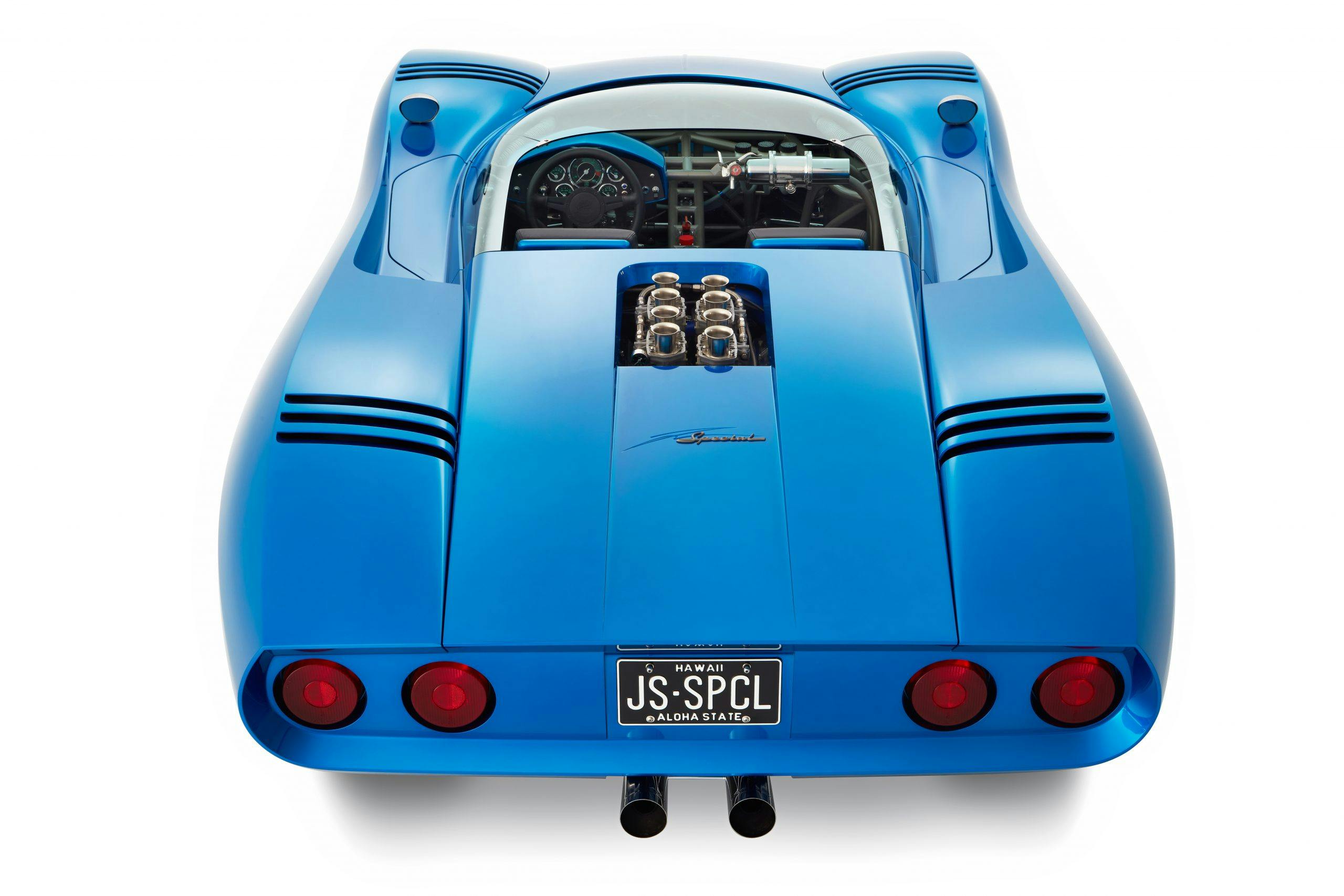
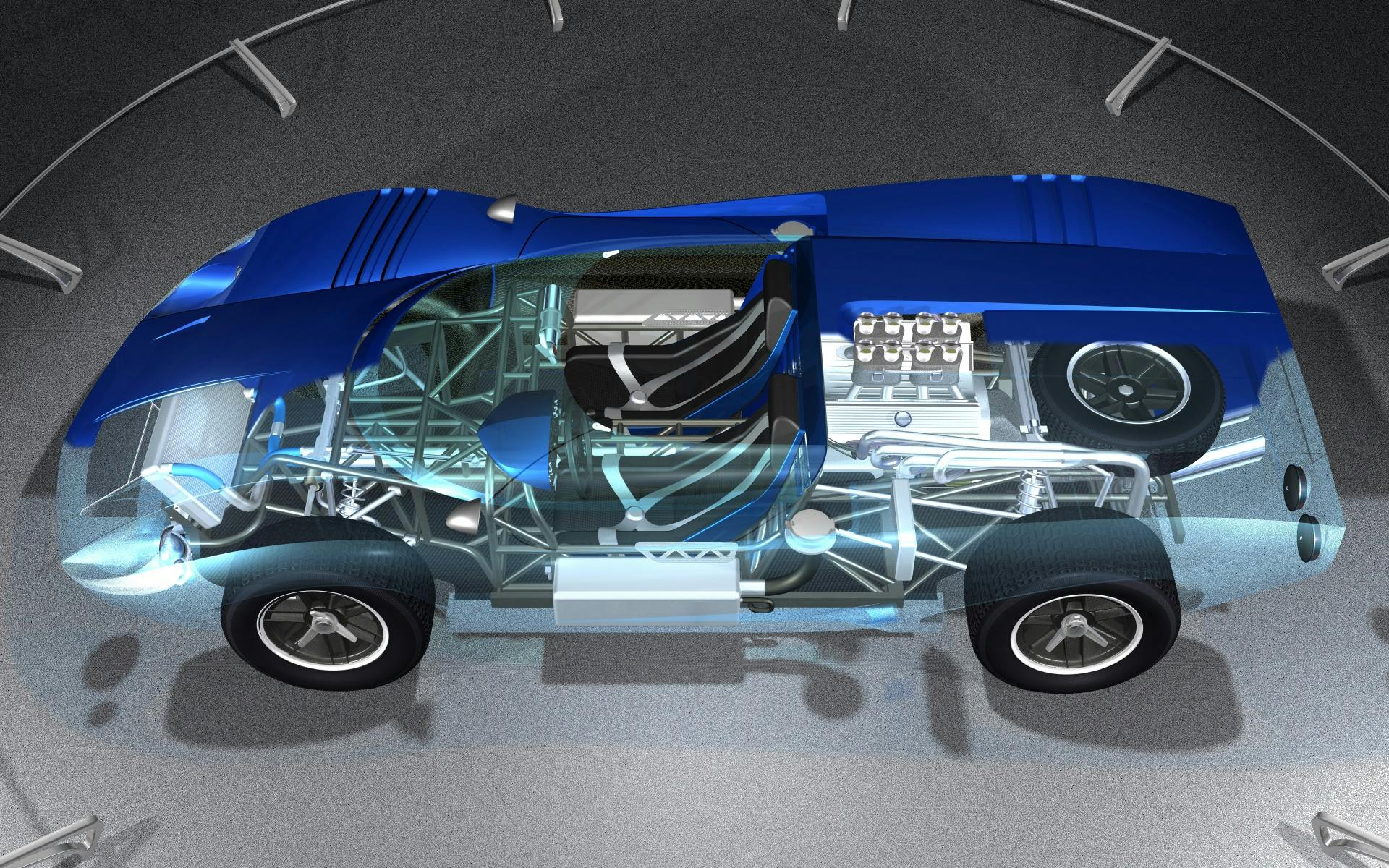

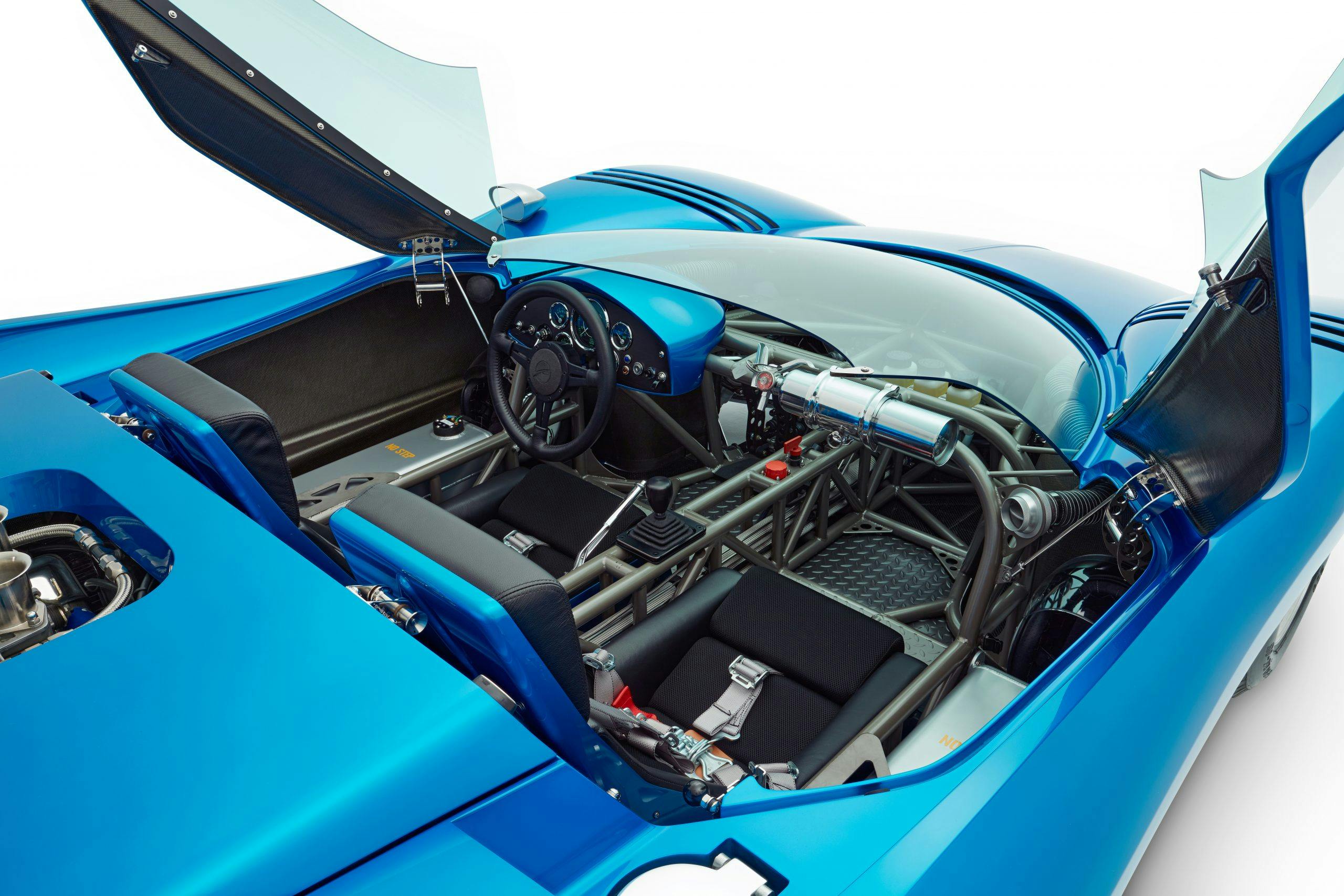

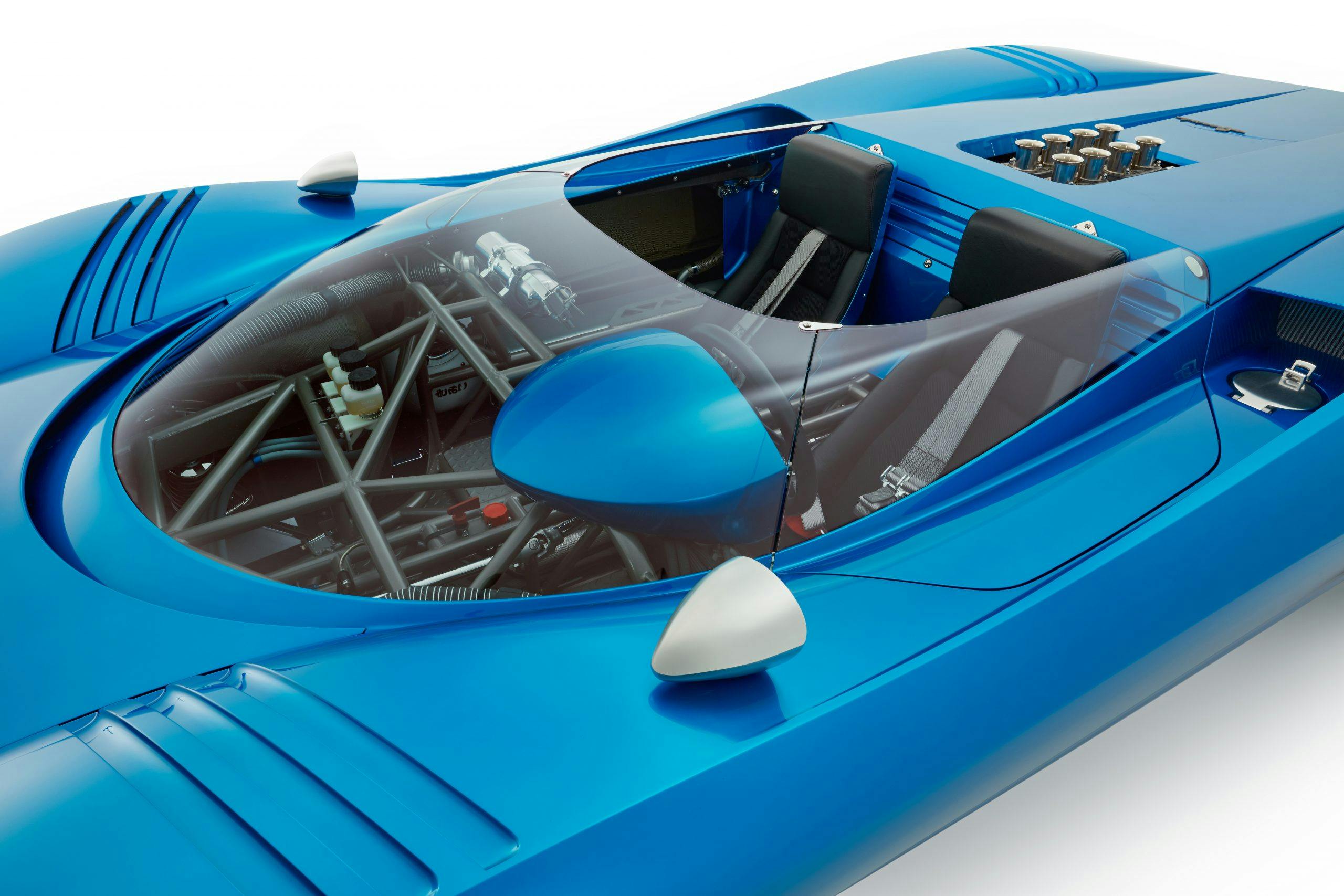
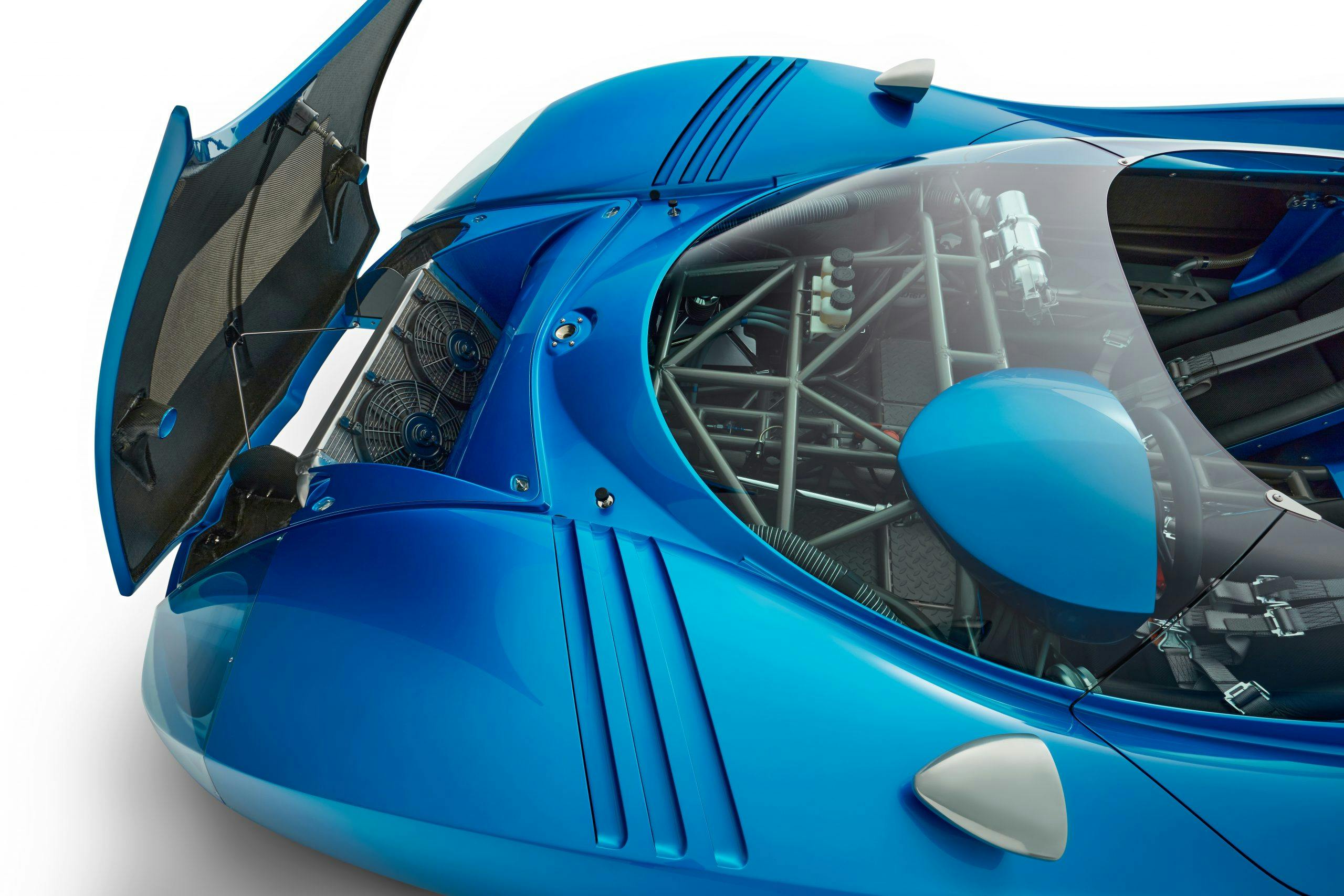
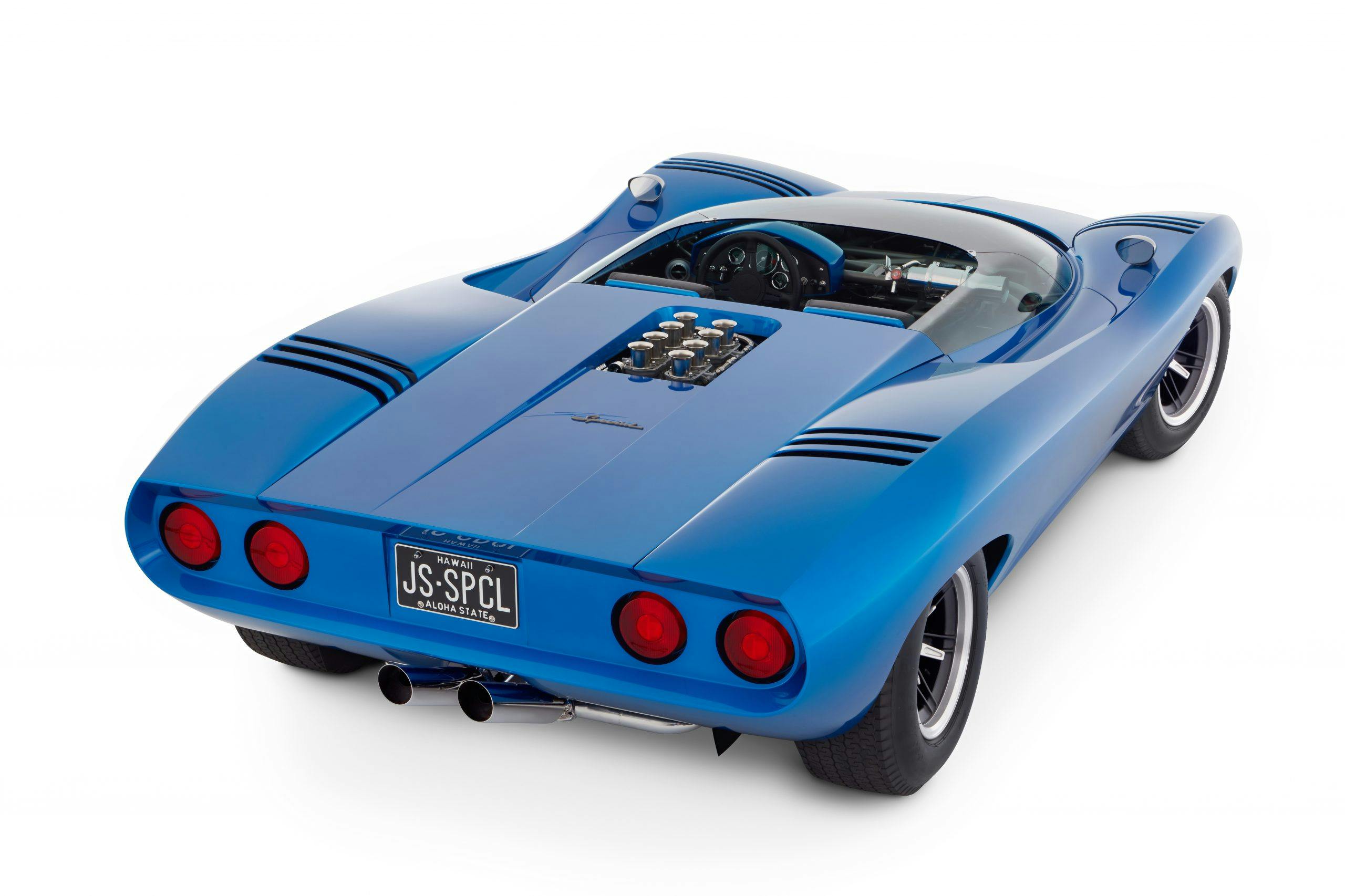

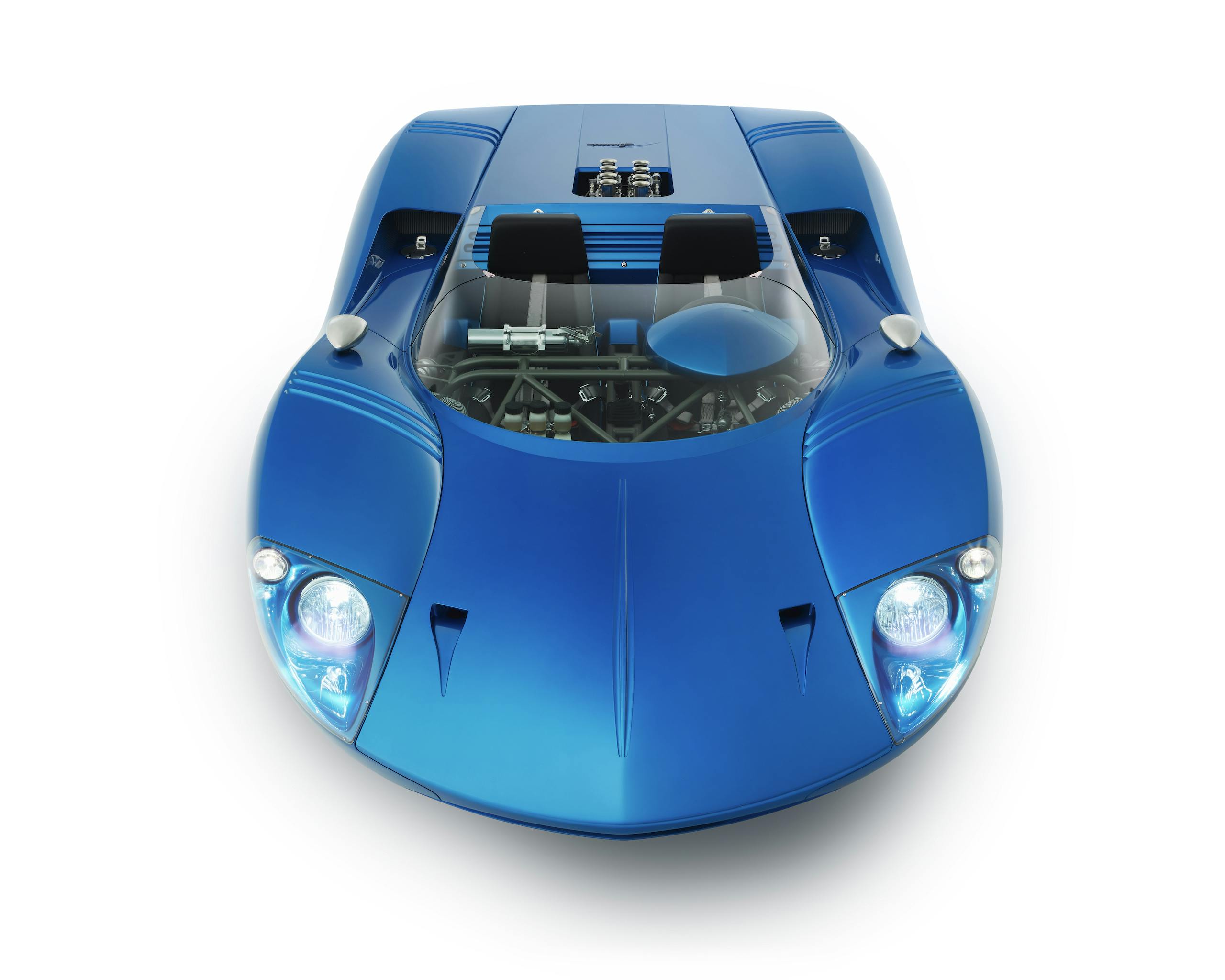
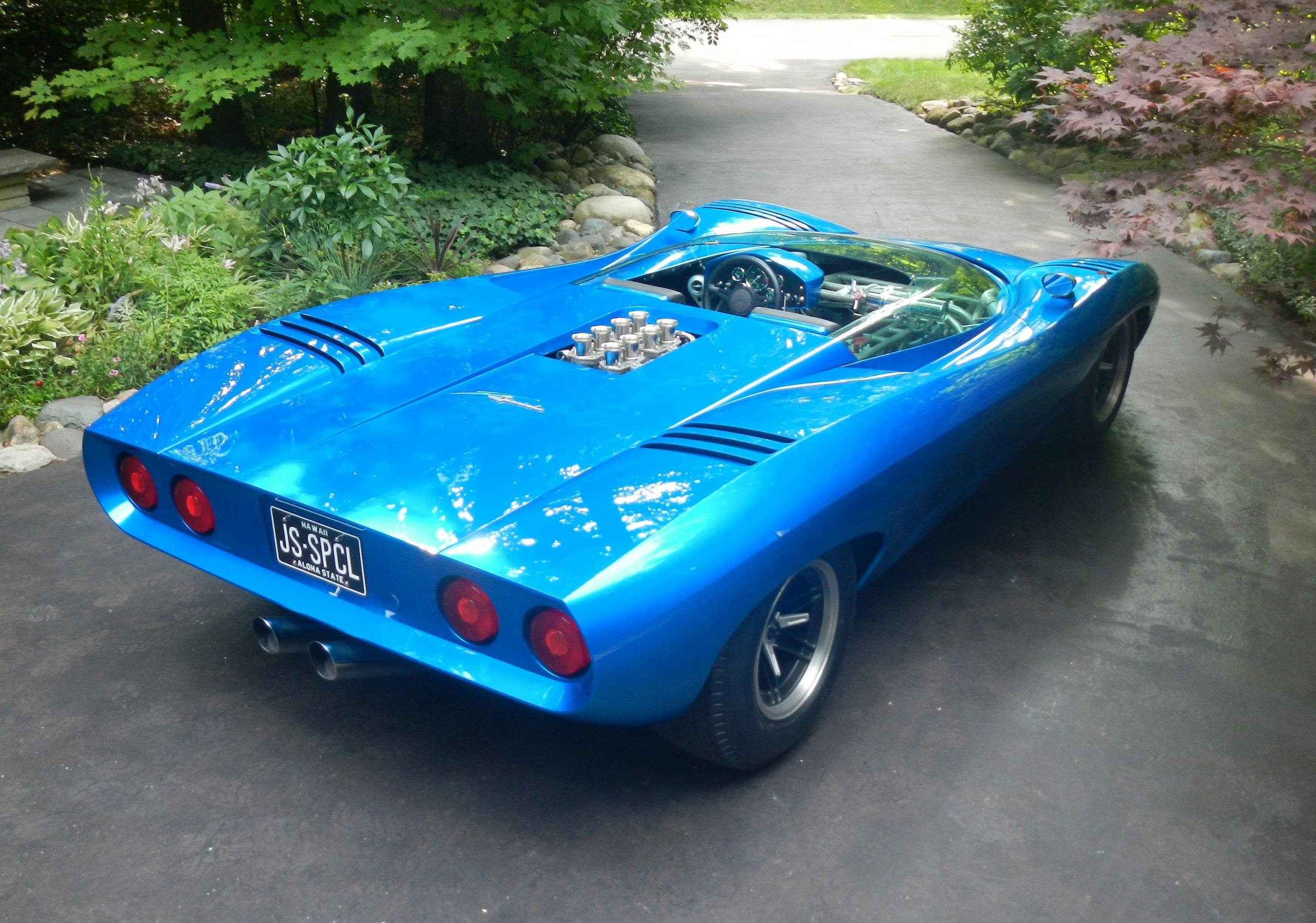

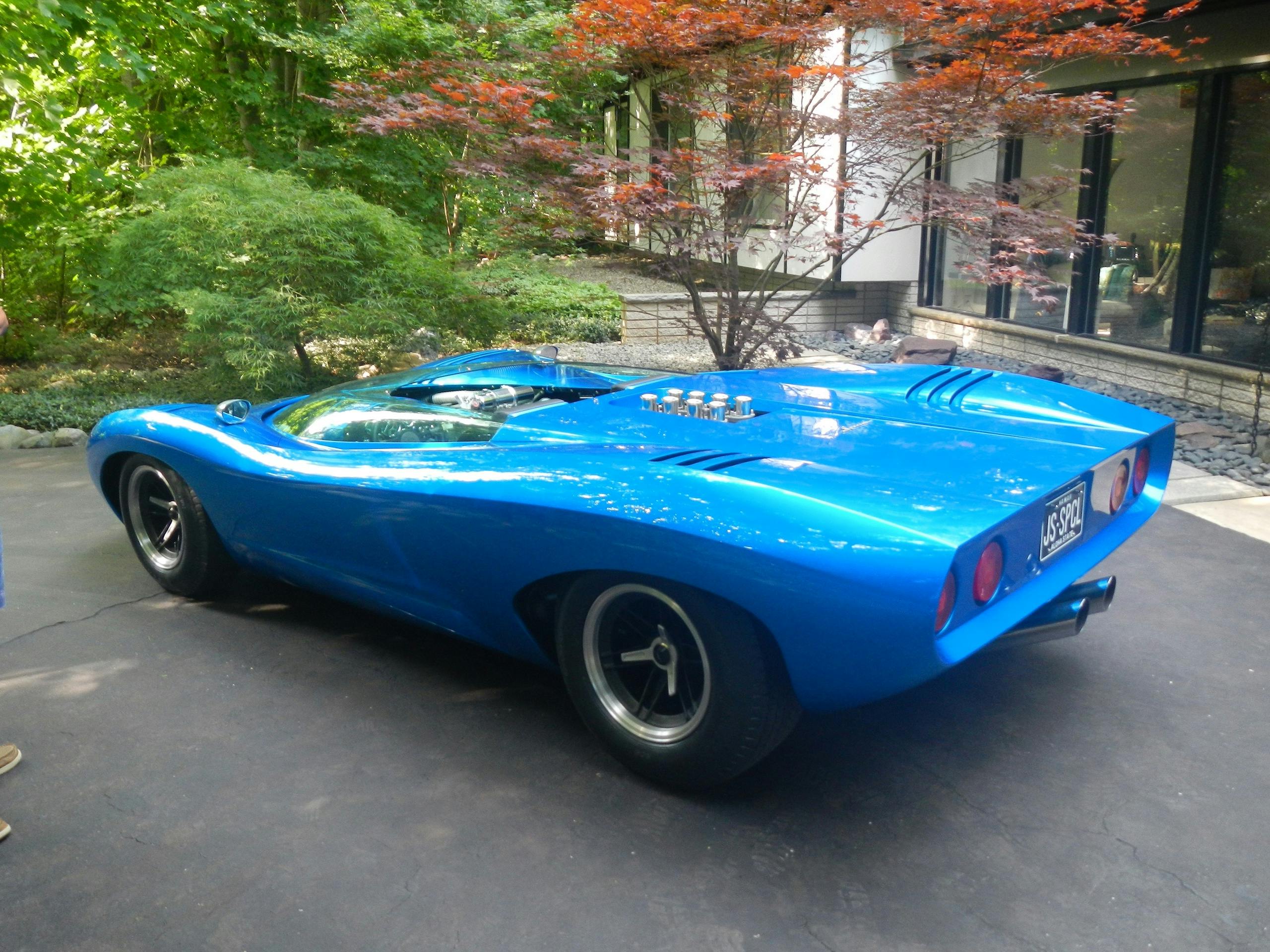
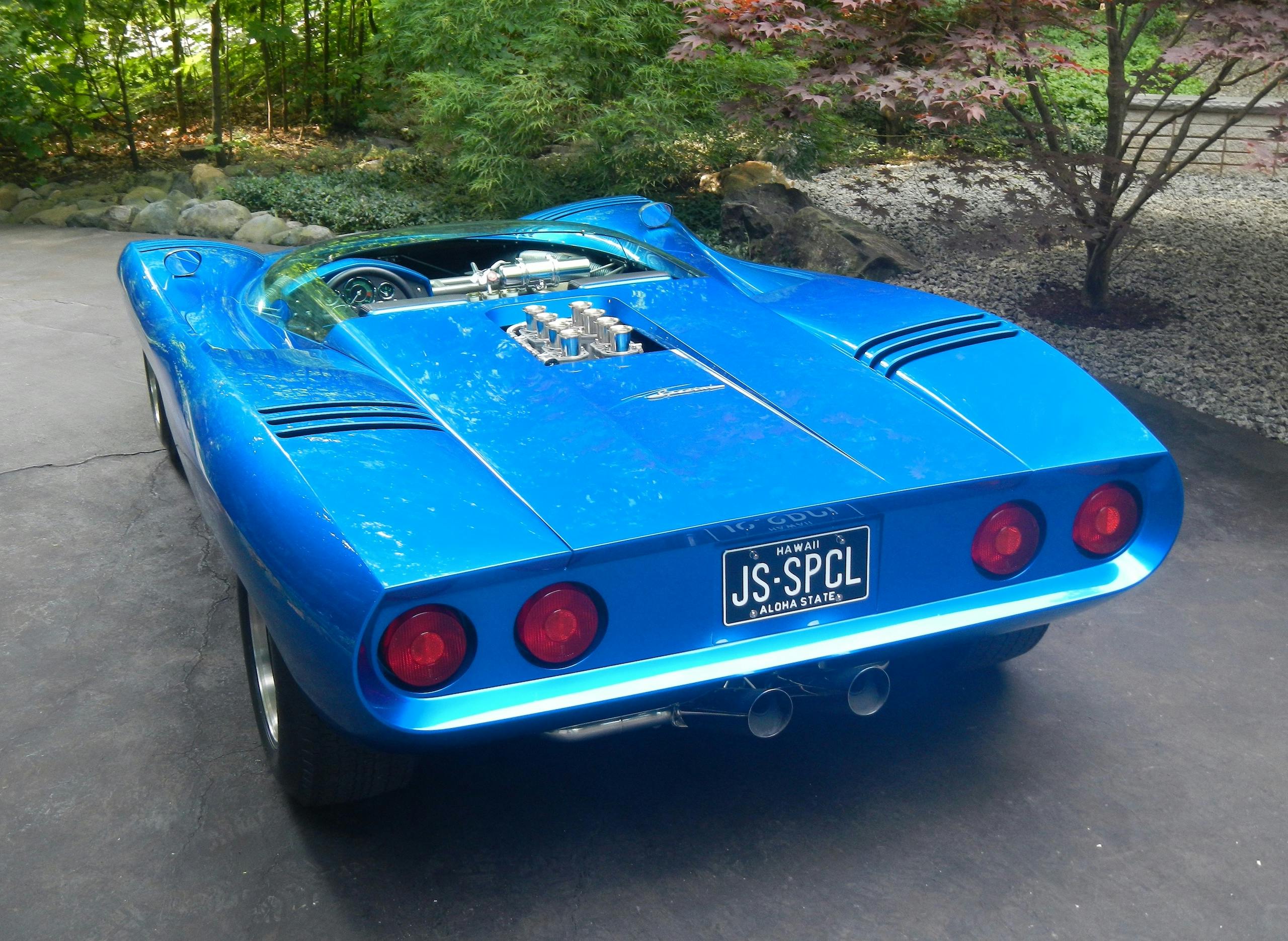

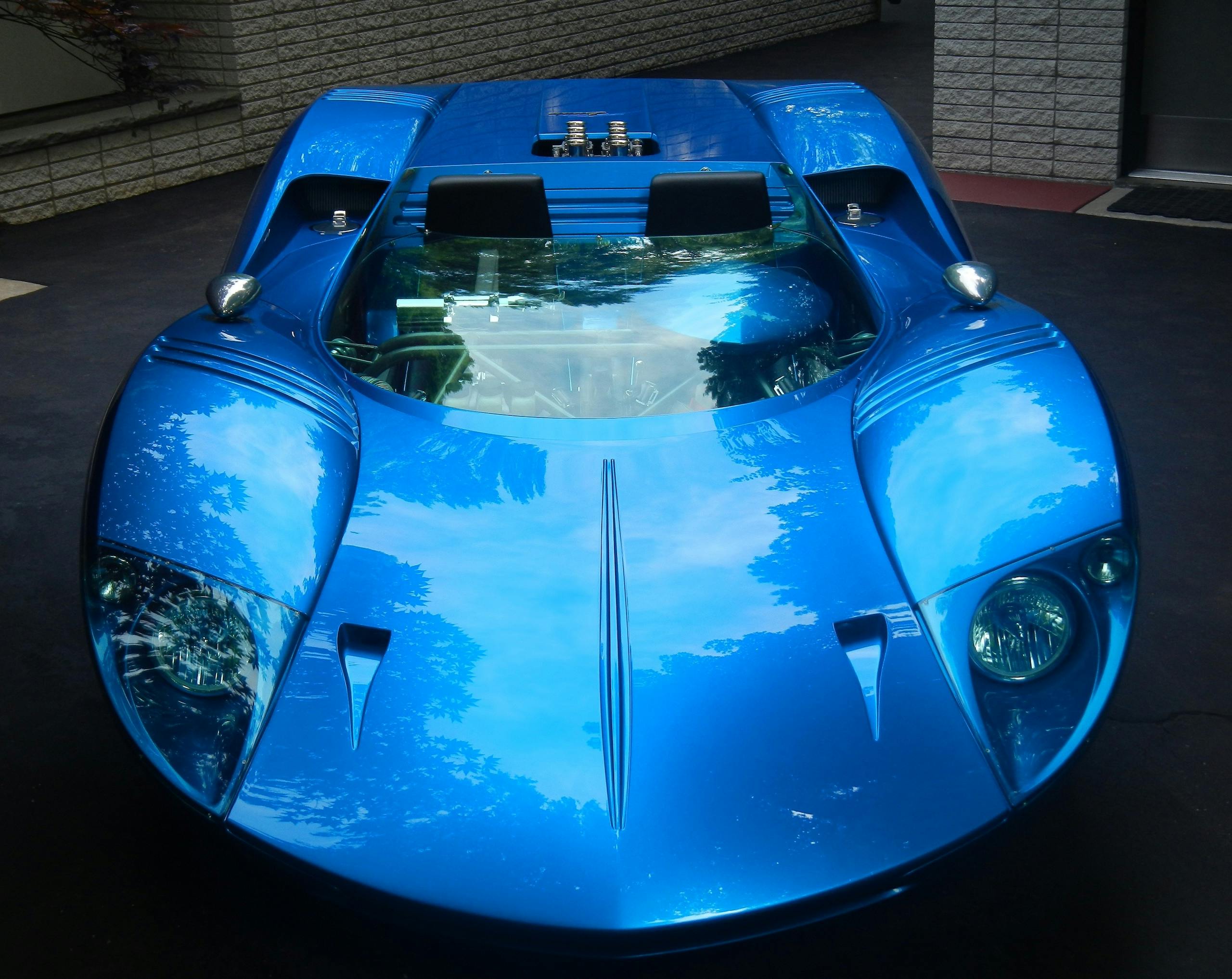
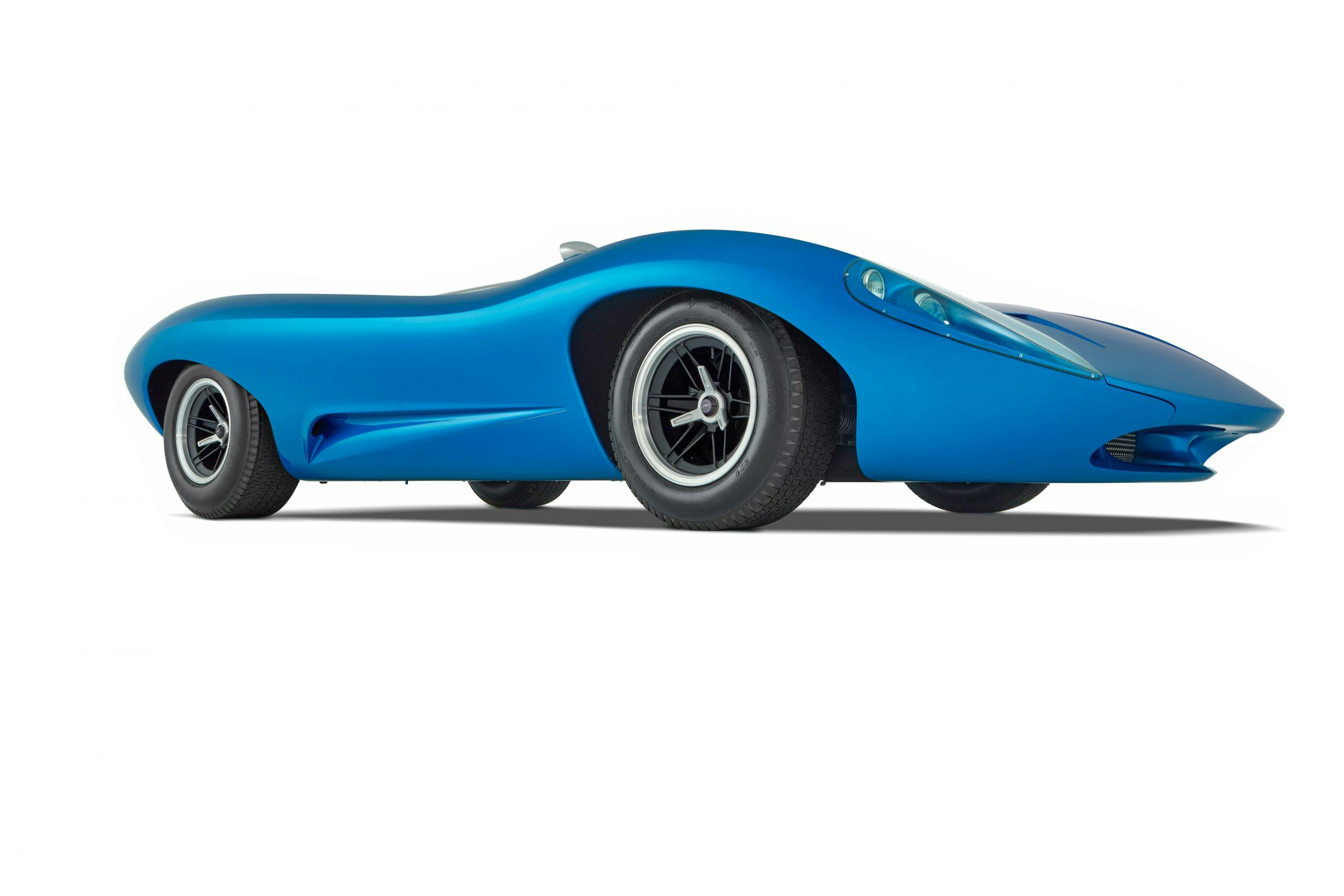
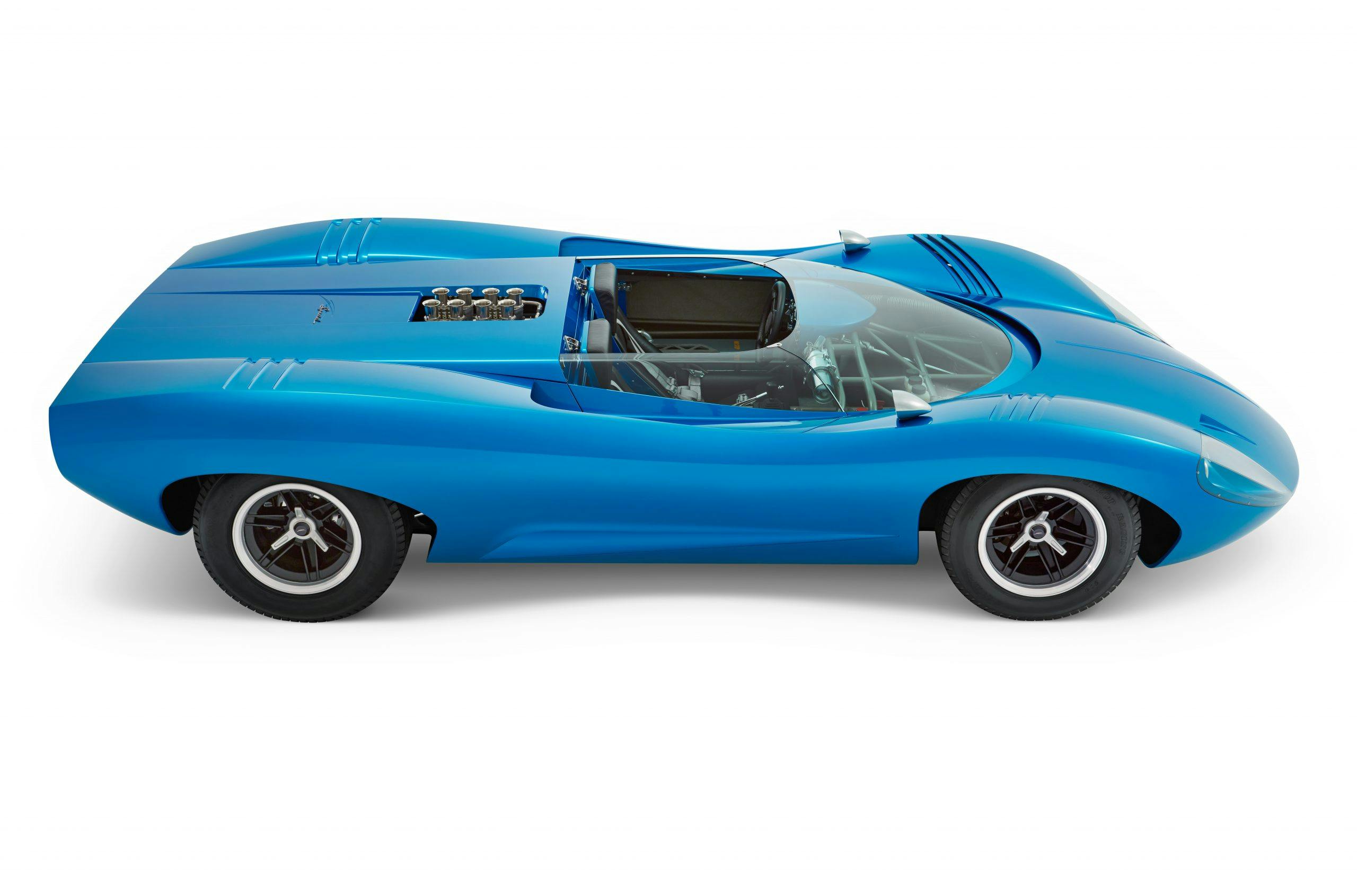

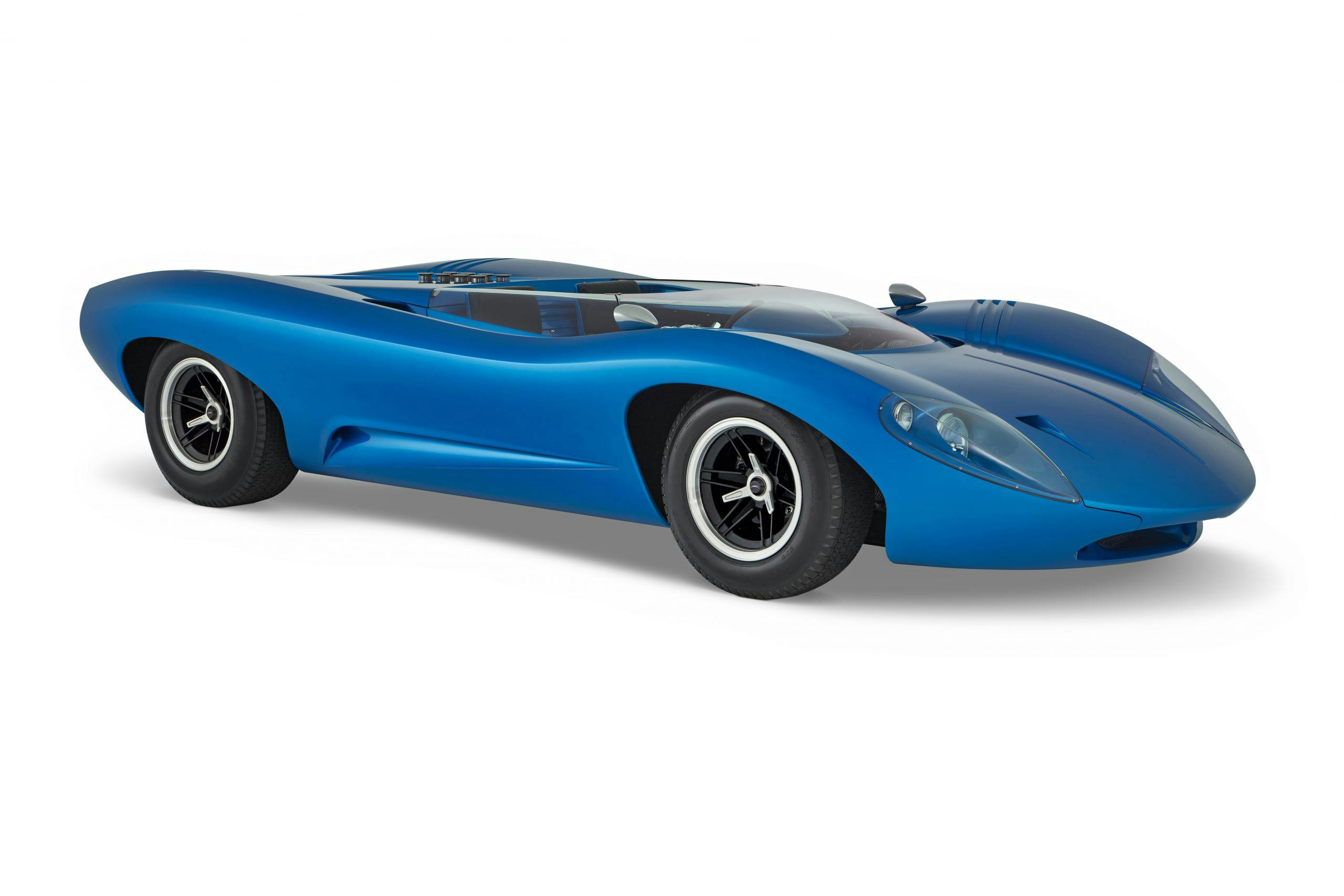
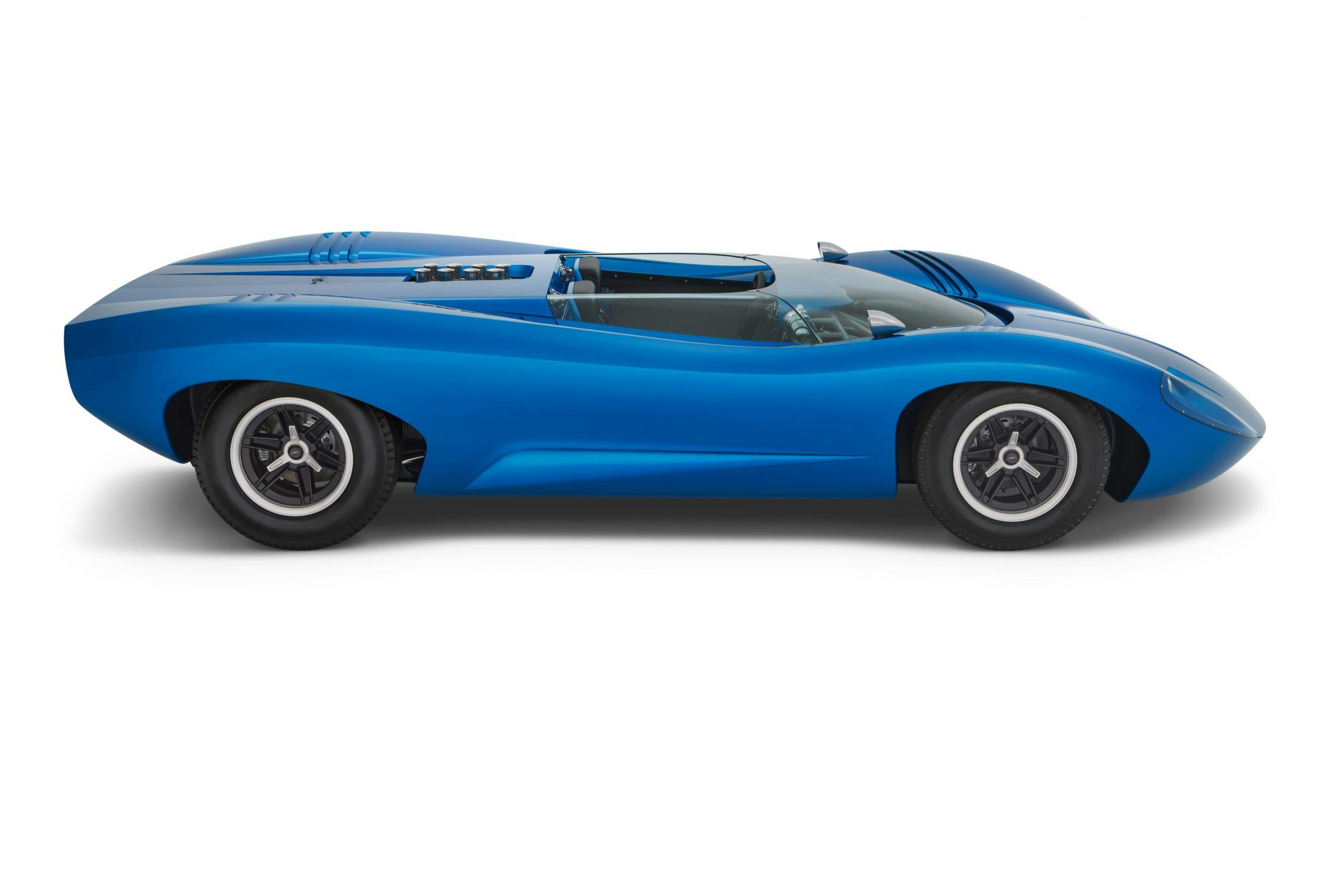
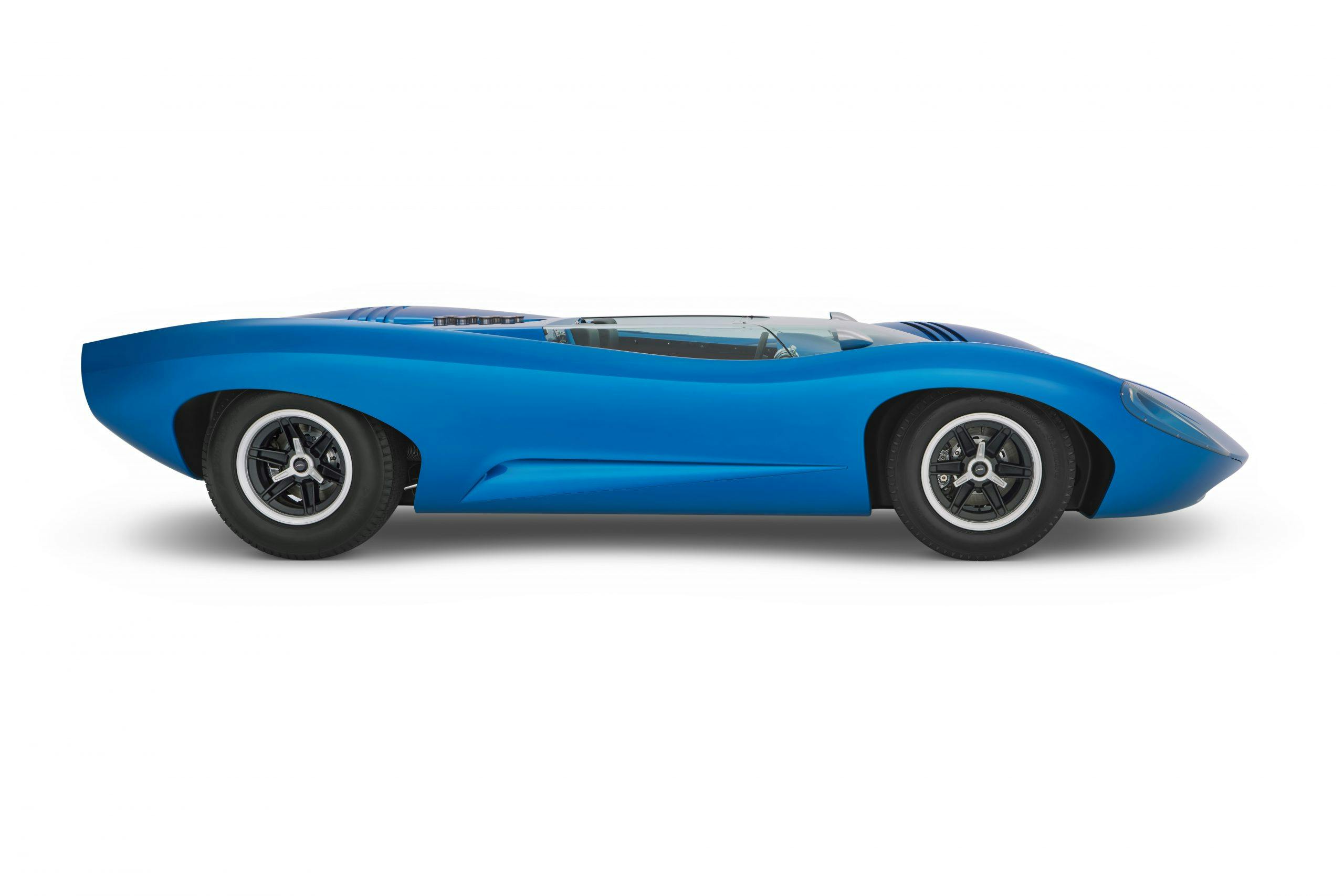


my first thought was – this looks like a car brought to life straight from Speed Racer. Amazingly low sunk costs for such a beauty – but the time it has taken to come to life is depressingly long.
If anyone out there is as crazy as me and would like to make another JS Special, I have molds and jigs for every single panel and bracket of my car that I would like to sell. They are taking up half of my garage and I would never consider building another copy. Jerry
WOW!!! Your vision of a vintage CanAm racer is spectacular! It’s got it all. Exquisite proportions, quality construction, appropriate mid engine warmed-over BOP V8, performance transaxle, PS Engineering wheels, etc.
Since you’re having a, hopefully temporary, problem with Governor Gavin Newscum’s bloated administration you might consider the following crutch:
If I were you, I’d be looking forward to a shakedown run at Sears Point or, if in SoCal, time well spent at the Willow Springs track shortly after appearing on Jay Leno’s Garage
Again, spectacular! All the best, Tom
Hey Jerry! I worked with you bery briefly in Advance Studio Warren just before you retired. I’m extatic to see the finished build. Jim was kepping me up on the up and up with the woes you were going through with the paint. Still floored how many coats of there not including clear. I miss the conversations about era of Can-Am and T70 lolas. I hope you still have the scale 312pb we got you on your last day and you’ve been making it out to Monterey Historics, Sonama etc… Anyway hope all is well out west!
Forget registering the car in CA. Register it is South Dakota. No EPA or CARB BS to deal with….